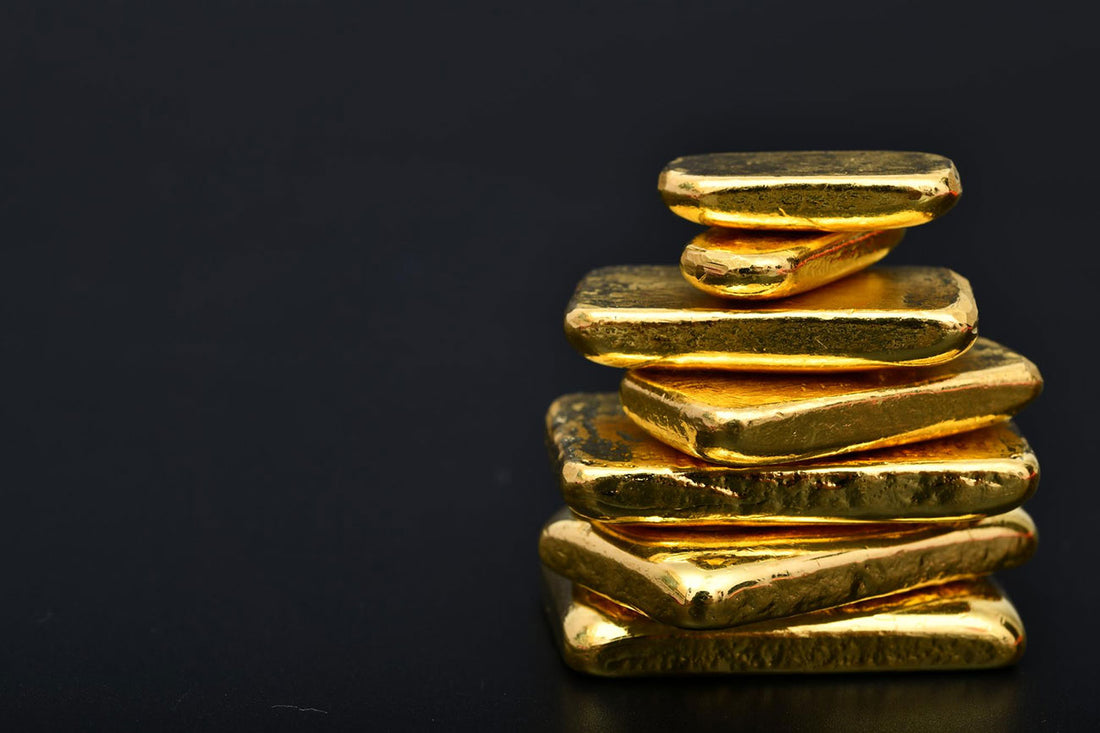As inflation soars and the economy struggles with unpredictability, the appeal of investing in bullion continues to grow. Those who have never invested in gold or silver before may be looking for a new asset to park their money, but many still don’t understand the point of buying bullion.
There’s been a rush of investors buying gold bullion as they seek out safe haven assets in a time of uncertainty and crisis. Gold dealers have been swamped by demand over the last several years, largely due to fears about the pandemic, the war in Ukraine, and inflation.
Gold is not the only precious metal that functions as an investment vehicle, either. Silver is the next most popular precious metal and one that can be purchased in the form of bullion coins. Bullion can also include platinum and palladium, but they are not as common.
If you’ve never purchased gold or silver as an investment, we provide free bullion consultations to help explain everything you need to know about the market and how to find the products that best match your investment goals.
What Is the Point of Buying Bullion?
There’s no single reason to buy gold or silver bullion, but a number of factors combined make bullion a compelling asset. These are some of the reasons investors add bullion to their portfolios.
#1 Bullion Is an Inflation Hedge
After decades of low inflation, rising prices have become a serious concern once again. Canada’s inflation rate hit 7.7% in May 2022, with many expecting it to continue at a high pace. It’s not just a Canadian issue, either, as inflation has skyrocketed in the U.S. and around the world.
With inflation higher than it’s been since the 1990s, investors are turning to bullion, which has long been considered a safe haven and an asset that holds onto its value as currency-based assets lose ground.
One thing to keep in mind is that gold’s performance as a safe haven against inflation isn’t as clear in the short term, but over the long term, it has proven to keep up with inflation. In other words, gold prices may not reflect accelerating inflation in real time, but tend to catch up across decades.
#2 Diversify Your Portfolio with Alternative Assets
The average portfolio consists of a high proportion of stocks, meaning it’s invested in the performance of companies listed on stock markets. It has been a difficult year for the stock market, as the S&P 500 closed the first half of 2022 down over 20%, and the possibility of a recession becomes increasingly likely.
Diversifying the assets in your portfolio is standard practice when you want to spread around the risks and reduce the level of risk you’re taking on. When too much of your portfolio is invested in a single asset, it can be greatly impacted by a single event, such as a stock market crash. Putting too much money in the bond market can expose you to losses from high inflation.
Bullion reacts in a different manner than stocks and bonds to economic and geopolitical events. Where stock prices tend to react negatively to recessions, demand for gold can push prices higher, so owning both will mitigate your risk of loss.

#3 Eliminate Counterparty Risks
Counterparty risk is the possibility that another party in an agreement will not meet their obligations in the transaction. When it comes to investments, that could mean an executive of a company who reports fraudulent financials or a fund manager who steals investors’ money.
When you own physical gold and silver, there are no counterparty risks once you have it in your possession. There can be risks if you decide to invest through an Exchange-Traded Fund, as again, you’re putting your trust in someone else to live up to their obligations, but bullion is the easiest way to avoid this issue.
#4 Join a Market with International Demand
Precious metals are among the most valuable commodities in the world, and they’re in demand across the globe. Gold and silver coins and bars are bought and sold around the globe, as well as bullion jewellery, which in some countries is used as an alternative store of wealth away from inaccessible banking systems.
In fact, the ten countries that consume the most gold by the ton are:
- India
- China
- S.A
- United Arab Emirates
- Indonesia
- K.
- Russia
- South Korea
- Iran
- Italy
Bullion has a global appeal for a variety of reasons, including jewellery and bullion investments.
#5 The Potential of Future Supply Constraints on Price
Whereas paper assets like stocks and bonds can be created every time a new company goes public or an organization needs to raise money through the bond market, bullion is a natural resource and finite in supply.
Gold and silver are elements that have to be mined out of the ground and refined. By some estimates, the world has already reached peak silver production, and production will likely decline in years to come as remaining reserves become harder and more expensive to mine.
Even without considering the future limitations on bullion supply, the situation in Ukraine has put another constraint on precious metals supply. Russia is one of the world’s top producers of both gold and silver, and economic sanctions from western countries may cut off those supplies. That could lead to ongoing supply problems, especially for silver, which has high industrial demand and is often used in products that wind up in landfills, diminishing the above-ground supply of silver far more than gold.
Gold vs. Silver: Why Buy Gold Bullion?
Precious metals can play a useful role in your portfolio, and they share a number of qualities, but there are also some differences between gold and silver that prospective investors should know about. If you’re debating between gold and silver bars or coins, it pays to know the key differences between the two and their price trends.
Gold is by far the more established of the two metals, and it tends to trade at 70 to 90 times the value of silver, though it has gone up to as high as 120:1 in the last five years. This means that gold is considerably more expensive per ounce.
For beginner investors, an ounce of gold can represent a substantial figure. But it’s the preferred metal for institutional investors and the very wealthy because it fits so much more value into less space, reducing storage costs and concerns.
Gold is also better known as a counter-cyclical investment, meaning its prices tend to rise when more conventional assets like stocks go down. Long stretches of volatility and poor results on the stock market usually lead to a higher demand for gold.

Lower Prices and Higher Volatility: Why Buy Silver Bullion?
By contrast, silver prices are much more affordable per ounce, and it’s an appealing metal for investors who are new to bullion. Just like gold, you can purchase investment-grade silver coins (99.99% pure silver) made by government mints like the Royal Canadian Mint or bars made by reputable refineries.
Lower prices also make it easier to buy higher quantities of silver, which lead to lower costs per ounce. Bullion dealers have to charge a premium above spot to cover their own costs. Investors who buy larger quantities of coins or bars usually enjoy a discount on those premiums.
Lower-cost assets also tend to have higher volatility. The market is smaller, and small price changes have a bigger impact on returns. Volatility is both a risk and an opportunity. Faster price changes happen both ways, leading to faster gains than you might enjoy from gold, but also faster losses, which can catch you off-guard.
Tips for Buying Bullion
#1 Buy Gold Before the Recession
If you want to take advantage of the role bullion can play as a defensive asset in your portfolio, you need to be proactive. That means you already own a position in bullion before the market conditions occur that send prices higher.
It’s all about buying low and selling high. If you wait for a recession or market crash to buy gold, you’re already getting in line behind everyone else who’s been preparing their portfolios for an economy where high inflation and supply chain issues have defined the narrative.
#2 Avoid Counterfeit Bullion
Investing in bullion is not risk-free. Price declines happen to gold as they do with any asset, including stocks and other commodities.
Another risk beginner buyers worry about is scams. They’ve heard stories about people tricked into buying counterfeit coins or bars. Increasingly, counterfeits are mass-produced using designs very close to real international coins. Identifying fake bullion can be very hard for the untrained eye.
Beginner buyers would be best off going to a bullion dealer with a great reputation, reviews, and a business that can be held accountable. Avoid online platforms where anonymous individuals arrange meetings to sell bullion. Often these individuals will offer counterfeit bars or coins at a fraction of the price of the real thing. No serious dealer is selling bullion at a loss. It makes much more sense to protect yourself and your investments by working with a local bullion dealer.
#3 Know Where to Sell
Buying bullion is only half the process if you’re serious about investing in this asset. Liquidity is an important quality in any asset you own. While bullion is not quite as liquid as stocks, which you can usually sell online with a click, it does have a robust market and should not be difficult to cash out.
If you are interested in selling your silver bullion (or your gold), a bullion dealer is typically the best place to get the best price in as little time as possible. Global Bullion Suppliers buys all kinds of precious metals through our store, Muzeum. We post our rates publicly online, so you know what to expect before you even take your bullion in.
Bullion is a very useful asset to hold in your portfolio. It can help preserve your savings through recessions, market crashes, and periods of high inflation. The point of buying bullion is to build a defensive position that prepares you for more challenging economic circumstances.

